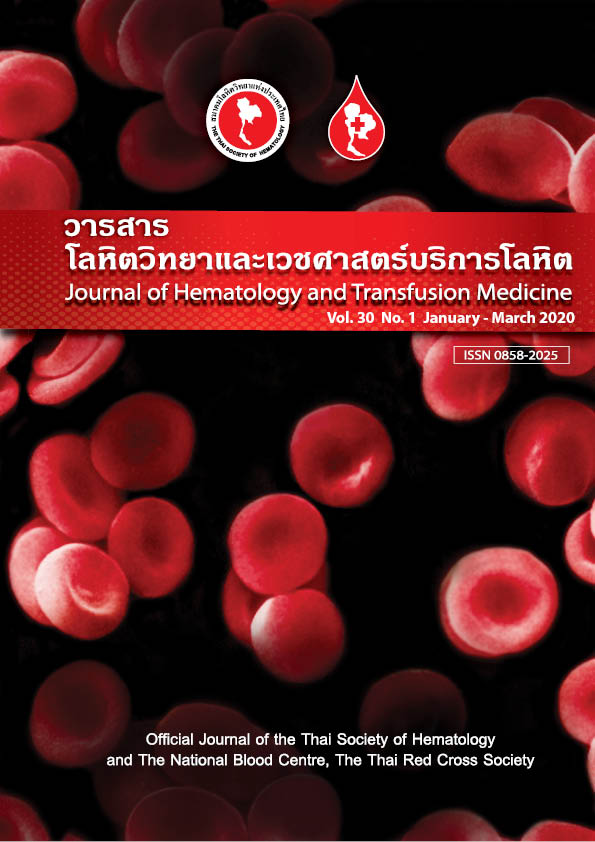Evaluation of donor recruitment integrated plan and blood component distribution effectiveness of the five lower-northern provinces ofThailand in 2018
Keywords:
Donor recruitment, Blood shortage, IntegrationAbstract
Abstract:
Introduction: Uncertainty and limitation of number of mobile units in each province are the major causes of inconsistency blood procurement and frequent blood shortage. The Regional Blood Centre VIII, Nakhonsawan, Thai Red Cross Society in cooperation with the Provincial Red Cross Chapters and regional hospitals in the five lower-northern provinces of Thailand has integrated the provincial blood recruitment plan into the regional plan to help solving problems. Objective: To evaluate the number of blood procurement from mobile units after an integration of the five lower-northern provinces Nakhonsawan, Uthaithani, Pichit, Chainat and Tak : Mueang, Wangchao, Samngao and Bantak districts, including their blood component distributions to other hospitals within the Regional Blood Centre VIII, Nakhonsawan territory in the year 2018. Materials and methods: To investigate the number of blood procurement from mobile units and blood components delivery to other hospitals by analyzing the data of the blood procurement combined with laboratory testing and blood component distribution of the Regional Blood Centre VIII, Nakhonsawan in 2018. The three strategies of an integrated plan had been established as: the donor recruitment plan, the management of mobile units and the public relation and campaign. Results: The total number of blood procurement in 2018 was 73,064 units (3.01% of population in this area), which 49,353 units (67.55%) of total blood donation were collected from integration of mobile units. It was increased when compared to that of the previous years without integration program; however, there was no statistically significant difference (p > 0.05). Nakhonsawan had the highest numbers of blood donation 23,812 units (48.33 %), followed by Pichit, Chainat, Uthaithani and some parts of Tak which were 10,561 (21.4%), 5,934 (12.02%), 5,709 (11.57%), and 3,297 units (6.68%), respectively and the 611 mobile blood drives were held in this year. For the distribution of blood components to other hospitals, it appeared that the distribution of cryoprecipitate, platelet product, fresh frozen plasma and red blood cells were 100, 99.38, 99.24 and 85.76%, respectively. Conclusion: The three strategies of the integration of blood recruitment was implemented in the five lower-northern provinces of Thailand revealed that 67.55% of total blood donation in this area was supported from mobile units with 100% voluntary non-remunerated blood donors. Of all blood components from the Regional Blood Centre VIII, Nakhonsawan were distributed directly to other hospitals in the responsible area in accordance with the need more than 80%. However, the continuous improvement of the integration plan will bring more success and sustainable outcome.



